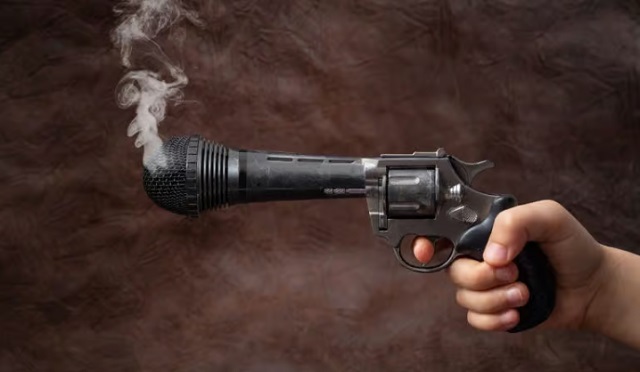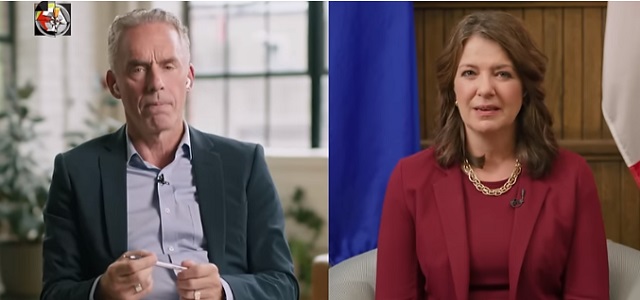Edmonton
My European Favourites – Rome, Italy
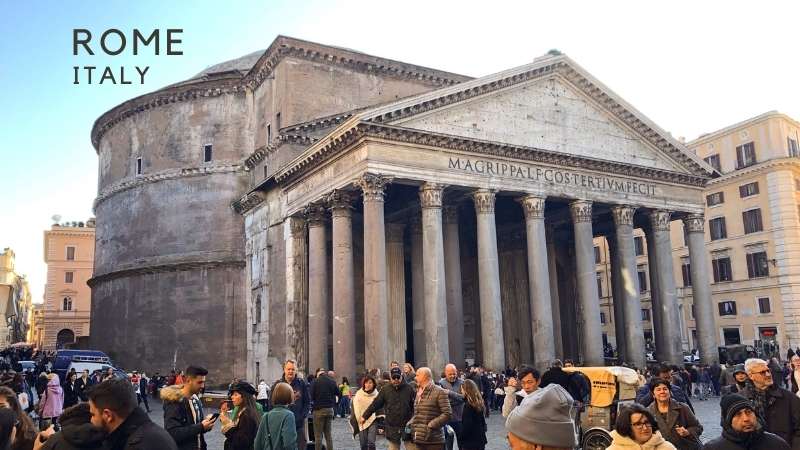

My European Favourites – Rome, Italy
Rome’s history spans three millennia and is one of Europe’s oldest occupied cities. The Eternal City was initially settled by a mix of Etruscans, Latins and Sabines. During it’s highest point, it became the capital of the Roman Kingdom, Roman Republic and Roman Empire. When Rome had a vast Empire, it gained the nickname “Caput Mundi” or “Capital of the World.”
After the fall of the Roman Empire in the west, the city came under control of the Papacy and it became the capital of the Papal States until 1870. The following year Rome became the capital of the Kingdom of Italy which, in 1946, became the Italian Republic.
With close to 3 million residents in the city proper, Rome is the third most populous city in the European Union. The city’s culture, landmarks, monuments and myths have drawn visitors from every corner of the world.
The Vatican, the centre of the Catholic Church for billions of followers, is an independent state situated inside of Rome. The Vatican’s vast square, impressive museums, Sistine chapel, and St. Peter’s Basilica require a full day of exploration.
The impressive ruins of Ancient Rome, which include Trajan’s Forums, the Roman Forum, Palatine Hill and the Colosseum are essential for any visitor of Rome. If you do a tour of Ancient Rome, be sure that you enter into the Colosseum. It’s an unforgettable experience.
We always include guided tours of the Vatican and of Ancient Rome on all of our Azorcan tours to Rome. Once we have completed those great tours, our travelers enjoy a free day in Rome to sightsee, shop and explore the city on their own. This story outlines a walk that we suggest to see some of central Rome’s great landmarks and squares at their leisure. You can find a google map of our walk at www.azorcan.net/media

Piazza del Popolo from Pincio Park, the two churches on the south and the north gate.
Piazza del Popolo
Our walk starts at the Piazza del Popolo, or the “People’s Square.” The large oval square is located inside the northern gate to the city (Porta Flaminia). Just inside the gate you should pop in to the Santa Maria del Popolo basilica to see two magnificent canvases by Caravaggio.
At the centre of the square is an Egyptian obelisk dedicated to Ramesses II. The obelisk was once located in the Circus Maximus, where Romans enjoyed chariot races. By climbing the stairs on the east side of the square, you will reach the Pincio Hill Terrace (Terrazza del Pincio) and have a great panoramic view of the square and beyond.
On the south side of the square there are two churches, the Santa Maria dei Miracoli and the Santa Maria in Montesanto. They look identical from the outside although they have different interiors. There are three main streets leading from the Piazza del Popolo. The two churches are separated by the main shopping street, the Via del Corso. The other two streets are located on either side of the churches. On the right is the Via di Ripetta and on the left is the Via del Babuino. We will leave the square on the Via del Babuino and walk for about 600 meters until we arrive at the Piazza di Spagna.

The Spanish Steps on Piazza di Spagna, the Church of Trinità dei Monti and the Boat Fountain.
Piazza di Spagna and the Spanish Steps
The Piazza di Spagna, or “Spanish Square” is named after the Palazzo di Spagna (Spanish Palace) which has been on the square since the 17th century and operates as the Spanish Embassy to the Vatican.
The center of the square has the Boat Fountain (Fontana della Barcaccia). The fountain was designed by Pietro Bernini, the father of the famous artist Gian Lorenzo Bernini, for Pope Urban VIII in 1623. The fountain features the Pope’s family (Barberini) emblem with suns and bees.
Looking up from the square is the Church of Trinità dei Monti. The famous 135 steps connecting the square to the church were built in the 18th century. The Spanish Steps are a favourite place for tourists to sit, relax and enjoy the square.
A hundred meters south from the Spanish Square is the smaller Piazza Mignanelli. The square has a 19th century Marian column named, the Column of the Immaculate Conception. The ancient Roman column is topped with a bronze statue of the Virgin Mary with a crown of 12 stars standing on a globe. The interesting column has the symbols of the evangelists on the globe and statues of Moses, David, Ezekiel and Isaiah at the base. Worth the quick stop.
From the Piazza Mignanelli, we can take the Via Frattina back to the main Via del Corso to peruse the shops until we reach the Via delle Muratte and go left to the Piazza di Trevi.

The Trevi fountain and the Neptune statue at the centre. The colorful Galleria Sciarra.
Trevi Fountain and Galleria Sciarra
The Trevi fountain is probably the most famous fountain in the world. It’s actually the end point of the only ancient Roman aqueduct that is in continuous use today, the Vergine aqueduct. Architect Nicols Savi won the design competition commissioned by Pop Clement XII in 1732 but died before it was built.
The travertine stone fountain was completed in 1762 against the Palazzo Poli (Poli Palace) with the water cascading down three rocky cliffs that are decorated with plant sculptures. The water flows down each cliff into the large, 65 foot wide, fountain basin. At the center of the fountain is the ocean god Neptune in a shell shaped chariot that is being pulled by two horses. One horse is calm and the other angry. Each horse is being guided by a triton.
Placed into the façade on either side of Neptune are a statue of a virgin girl, who legend says, showed Roman soldiers the source of the water, and a statue of Agrippa ordering the construction of the aqueduct.
Ancient Romans threw coins into fountains so that the water gods would give them a safe journey or a safe return to Rome. Today, tourists throw coins into the fountain over their shoulder to ensure a return to Rome. A second coin is for love, and a third for marriage. About 3000 Euros is collected very day from the fountain and given to a charity that provides prepaid supermarket cards for the needy.
After throwing your coins into the fountain, walk to the left on the Via delle Muratte for about 120 meters and turn left onto Via Santa Maria in Via. A block in, you will be directly in front of the Galleria Sciarra. Enter into the amazing interior courtyard with a glass and iron roof, called an arcade. The richly Art Nouveau decorated walls, in celebration of women, were painted in the late 1800s by Giuseppe Cellini using a unique painting method using pigments and Punic wax called “encaustic painting.” I like to stand in the centre of the galleria and gaze upwards, admiring the brilliant colors. The intensity and shade of the colors change depending on the time of day and the intensity of the light spilling in through the glass ceiling.
Leaving the galleria, go back to the Via delle Muratte and turn left. A block away you will cross the Via del Corso to the Via di Pietra that will take you to the Piazza di Pietra (Rock Square). Traverse the rectangular Piazza di Pietra, and staying on the left of the square, take the Via dei Pastini until you reach the Rotonda Square and the Pantheon.

The Rotonda Square and the entrance to the Pantheon. The interior of the Pantheon.
The Pantheon and the Ides of March
The Rotonda Square (Piazza della Rotonda) has a marble fountain with an obelisk at its centre. The fountain was constructed in 1575 and the Egyptian obelisk, one of 13 found throughout Rome, was added in 1711. The main attraction of the square is the magnificent Pantheon.
The Pantheon of Agrippa, or just the Pantheon, is an architectural wonder and one of the best preserved buildings from Ancient Rome. In 27 BC, Marcus Vipsanius Agrippa commissioned the building of a circular temple to “all the Roman gods.” The temple burned down, but in the early 2nd century, the Pantheon underwent a reconstruction by Hadrian. Interestingly, the inscription to Agrippa still remains on the front portico of the temple. After the fall of Rome in the mid 4th century, and attacks by barbarians, the Pantheon endured many years of neglect.
In 609 AD, the Byzantine emperor Phocas donated the building to Pope Boniface the IV. The Pope consecrated it and dedicated it as the Basilica of St. Mary and the Martyrs (Santa Maria ad Martyres). It is more commonly called Santa Maria Rotonda. As a church, it was saved from the decay and destruction that many Ancient Roman buildings suffered during the middle ages. In 1625 Pope Urban VIII, the guy with his family crest on the boat fountain at the Spanish Steps, removed many of the bronze coatings that used to be on the Pantheon’s porticos. He used the bronze to create the canopy of St. Peter in St. Peter’s Basilica and for fabrication of canons for the Sant’Angelo Castle.
In 1870, still a church, the Pantheon was turned into a memorial for famous kings of Italy and some famous artists. Amongst others, the tomb of Vittorio Emanuel II, the first King of a unified Italy, is in the Pantheon along with Italian Queen Margherita of Savoy and famous artist Raphael.
The Pantheon is most famous for its hemispherical concrete dome that is larger than the dome of St. Peter’s Basilica. The dome is supported by eight large pylons and has an 8.92 meter opening in the centre, called an oculus, that allows natural light. The 43 meter height of the building is equal to the diameter of the dome. Two thousand years after it was built, it remains the world’s largest unreinforced concrete dome.

The Pantheon’s oculus and church alter. The Elephant statue in the Piazza della Minerva.
The Ides of March
Taking the Via della Minerva on the east side of the Pantheon, you will quickly arrive at the Piazza della Minerva. The interesting statue of the Elephant carrying an obelisk is by Gian Lorenzo Bernini in 1667. The obelisk was discovered in 1665 when excavations were taking place for the building of the nearby church of Santa Maria sopra Minerva. The Egyptian obelisk was brought to Rome possibly in the 1st century for the temple that once stood there for the Egyptian goddess Isis.
We continue on the Via della Minerva until we reach the Largo di Torre Argentina on the Corso Vittorio Emanuele II. You will see Roman ruins that were unexpectedly discovered in the 1920s during the demolition of old buildings. The square contains the remains of four temples from the era of the Roman Republic in the 2nd and 3rd century BC and remains of the Theatre of Pompey that was built later in 55 BC. The curia in the Theatre of Pompey was the place where Julius Caesar was assassinated by being stabbed 23 times on the Ides of March in 44 BC. The Largo di Torre Argentina site is also famous for having quite a few cats wandering the ruins. Mice beware!
After checking out the ruins, go west long the Corso Vittorio Emanuele II for about 350 meters and go south on Via Dei Baullari until you reach the Campo de’ Fiori.

The bustling Campo de’ Fiori market and a fresh flower vendor.
Campo de’ Fiori
Campo de’ Fiori means “field of flowers’ as it was a meadow during the middle ages. Over the centuries, the Campo de’ Fiori was notorious as the place for public executions. At the centre of the rectangular square is a statue of Dominican Friar Giordano Bruno, a philosopher, mathematician and astronomer, that was burned alive for heresy at this very spot on the square in 1600. His statue, completed in 1889, looks defiantly in the direction of the Vatican, who placed his works on the “list of forbidden books.”
During the day since 1869, the Campo de’ Fiori has been a bustling market with stands selling flowers, fruit, vegetables and fish. The historic streets surrounding the square are named for various trades include Via dei Balestrari (crossbow makers), Via dei Baullari (coffer makers), Via dei Cappellari (hat makers), Via dei Chiavari (key makers) and Via dei Giubbonari (tailors).
Leaving Campo de’ Fiori, walk back to the Corso Vittorio Emanuele II where you will see the small Piazza di San Pantaleo across the street. Located at the back of the square is the Museum of Rome in the Palazzo Braschi. Take the street on the right of the palace, Via della Cuccagna, which will lead you to the Piazza Novonna.

Piazza Navona’s Church of Sant’Agnese in Agone and colorful buildings with restaurant patios.
Piazza Navona
The Piazza Navona’s elongated shape is a result of it being built on the former site of a stadium whose remains sit about six meters below the square. The Stadium of Domitian, built in 86 AD, was used for games and horse races. Some of the stadium’s ruins can be seen underneath some of the surrounding buildings.
Over many years, the Piazza Navona has been a centre for markets, festivals, races, and theatrical performances. On weekends in August from the 17th to the mid 19th century, when the square had a concave bottom, it was partially flooded to offer Romans a cool place to congregate and enjoy the summer. In recent times, a Christmas market is held annually on the square.
The Piazza Navona is dwarfed by the 17th century Church of Sant’Agnese in Agone. The church is named after St. Agnes, who was martyred in the Stadium of Domitian. The white church is situated on the west side of the square, and is one of the best examples of Baroque architecture in Rome. Located at the south end of the square, the Palazzo Pamphilj and the Church of Our Lady of the Sacred Heart are other notable buildings.

The Moor Fountain, the Fountain of the Four Rivers, and the Neptune Fountain.
The Piazza Navona has three impressive fountains. The Fontana dei Fumi (Fountain of the Four Rivers) by Bernini in 1651, located at the centre of the square, has statues representing four major rivers (Nile, Danube, Ganges, Rio de la Plata) on four continents. Above the statues, sits a copy of an Egyptian obelisk topped with the emblem of the Pope’s family, a dove carrying an olive branch.
Completed in 1575 by Giacomo della Porta, the Fontana del Moro (Moor Fountain) is located at the south end of the square. It features a Moor standing in a conch shell, wrestling a dolphin and surrounded by four tritons.
One the north side, the Fontana del Nettuno (Neptune Fountain) was originally designed by Giacomo della Porta at the same time as he designed the Moor Fountain. The initial fountain was just the basin without any statutes. In 1878, Antonio della Bitta, added the central sculpture of Neptune fighting with an octopus. A few year later, artist Gregorio Zappalà, was commissioned to add surrounding sculptures of sea nymphs, cupids and walruses.
From the Piazza Navona, you can continue north on the Via Giuseppe Zanardelli and across the River Tiber on the Ponte Umberto I (Umberto I Bridge) to the front of the massive Supreme Court building. From the bridge you will see the Castel Sant’Angelo on your left. That is our final destination on our walk.

Castel Sant’ Angelo, the bronze statue of Michael the Archangel and angel holding a cross.
Castel Sant’ Angelo
The round structure on a square pedestal wasn’t originally intended to be a castle but was built as a mausoleum for the Emperor Hadrian in 139 AD. The burial chamber at the center of the mausoleum contains an urn with the ashes of Hadrian plus those of future emperors from the Antonin and Severi families. The mausoleum was turned in to a military fortress in 401. When the fortress was besieged and sacked by the Visigoths in 410 AD, the ashes were scattered by looters. When the Goths attacked in 537 AD, the tomb statues and decorations were destroyed.
Later, in the 14th century the castle’s walls were fortified and towers were added. A secret fortified passage from Castel Sant’ Angelo to the Vatican was added to protect the papal community. The castle has also been used as a prison where many were tortured, starved and even executed in the courtyard. The Dominican Friar Giordano Bruno, who was burnt to death in the Campo de’ Fiori, was a prisoner here for six years.
Since 1753, the Castel Sant’ Angelo has been topped by a bronze statue of Michael the Archangel sheathing his sword. The Castel Sant’ Angelo bridge has ten angel statues holding up instruments of the passion of Christ including a pillar, whips, a crown of thorns, Veronica’s veil, his garment and dice, nails, the cross, the superscription INRI, the sponge and the lance.
The Castel Sant’ Angelo is located in the Parco Adriano (Hadrian’s Park) and is now a museum that is visited by more than a million people each year.
Let’s Go To Rome
Rome is full of historic buildings, squares and ruins. There are places we could have easily added during our walk, but just as “Rome was not built in a day,” it is also true that “Rome can not be seen in a day.” I included the most interesting and significant stops in Rome’s Centro Storico.
In the evening, I suggest going to the medieval Trastevere neighborhood located just south of Campo de Fiori by crossing the River Tiber at the Pont Sisto. Partake in the evening walk or promenade (passeggiata) while checking out the artisan shops. After working up an appetite, there is no shortage of trattorias, restaurants, beer pubs and bars to enjoy “la dolce vita” late into the night.
Explore Europe With Us
Azorcan Global Sport, School and Sightseeing Tours have taken thousands to Europe on their custom group tours since 1994. Visit azorcan.net to see all our custom tour possibilities for your group of 26 or more. Individuals can join our “open” signature sport, sightseeing and sport fan tours including our popular Canada hockey fan tours to the World Juniors. At azorcan.net/media you can read our newsletters, listen to our podcasts and view maps related tour all of our ‘My European Favourites” stories.
Images compliments of Paul Almeida and Azorcan Tours.
Read more of Paul’s stories on Todayville by clicking here.
Alberta
Male suspect involved in tragic incident between Beaumont and Edmonton sought by police; EPS release photos of suspect
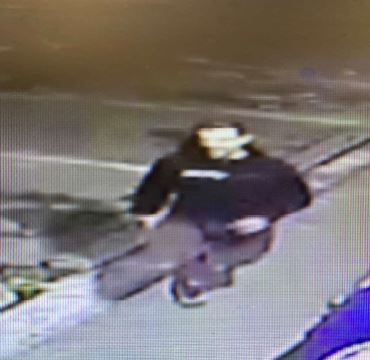
News release from the Edmonton Police Service (EPS)
The Edmonton Police Service (EPS) is assisting the RCMP with the investigation into a tragic incident that claimed the life of an innocent woman last night on 50 Street.
Yesterday, Saturday, Feb. 24, 2024, at approximately 9:40 p.m. various EPS resources were deployed to the area of 50 Street and 22 Avenue SW at the request of the RCMP. It was reported to police that RCMP attempted to conduct a traffic stop on a suspicious U-Haul in Beaumont, when the vehicle fled. The U-Haul subsequently travelled north on 50 Street into Edmonton, where it struck and killed a woman inspecting the exterior of her vehicle. Moments later the U-Haul came to rest just outside a gas station off of 22 Avenue and 50 Street.
After crashing the U-Haul, the male suspect then reportedly stole a Honda Civic that was parked outside the gas station with a child inside. Police did consider an Alert to the public at the time, though thankfully the child was located unharmed in the area of 66 Street and 25 Avenue minutes later. The suspect then fled the scene in the Honda Civic. The stolen vehicle has since been recovered outside of Edmonton.
The EPS and RCMP continue to actively seek the identity and whereabouts of the male suspect described as being approximately 5’11” who was last seen wearing a black hoodie with white text on the front, brown shorts and black shoes. CCTV photos of the suspect are included below.
“We are incredibly saddened to hear about the tragic death of the innocent woman who was killed on 50 Street,” says Det. Nigel Phillips with the EPS Investigative Response Team. “Our hearts are with her family and friends who will now have to carry on with this unfathomable loss.”
“We are doing everything we can to track down the suspect and we trust the public will help us identify and locate him as soon as possible.”

Assist to identify and locate: Male suspect running in area of 50 Street & 22 Avenue SW
Anyone with information about the suspect’s identity and/or their whereabouts is asked to contact the EPS immediately at 780-423-4567 or #377 from a mobile phone. Anonymous information can also be submitted to Crime Stoppers at 1-800-222-8477 or online at www.p3tips.com/250.
Alberta
Province forms Edmonton Public Safety Cabinet Committee in response to homeless encampment crisis
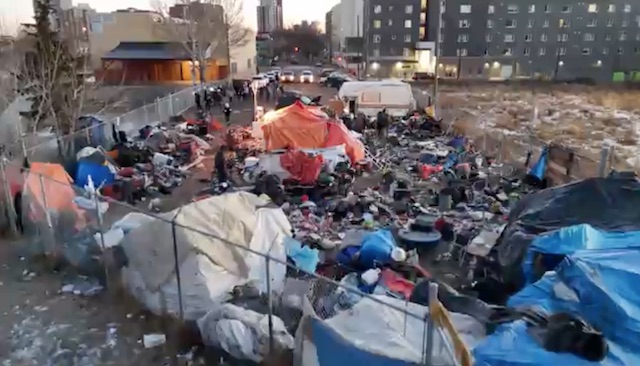
Edmonton encampments: Deputy Premier Ellis
Deputy Premier Mike Ellis issued the below statement in response to Edmonton Mayor Amarjeet Sohi’s announcement of his intention to declare an emergency:
“In November, Premier Danielle Smith ordered that an emergency cabinet committee be created and convened in response to the issue of crime and gang-related activity within encampments across the City of Edmonton.
“Alberta’s government cares deeply about vulnerable Edmontonians and we will always ensure that anyone who wants shelter and supportive services will receive it. However, we will not stand by and watch as vulnerable Albertans and the general public continue to be extorted, taken advantage of and killed by gangsters and deadly drugs.
“The Edmonton Public Safety Cabinet Committee (EPSCC) is comprised of ministers from departments that oversee operations and/or administer programs that promote public safety and support the transition of Edmonton-based encampment residents into safe, secure and appropriate arrangements.
“The cabinet committee membership includes:
- Danielle Smith, Premier (chair)
- Mickey Amery, Minister of Justice
- Mike Ellis, Minister of Public Safety and Emergency Services
- Adriana LaGrange, Minister of Health
- Ric McIver, Minister of Municipal Affairs
- Jason Nixon, Minister of Seniors, Community and Social Services
- Searle Turton, Minister of Children and Family Services
- Dan Williams, Minister of Mental Health and Addiction
- Rick Wilson, Minister of Indigenous Relations
“Also sworn into the committee are:
- Cody Thomas, Grand Chief, Confederacy of Treaty Six First Nations
- Dale McPhee, Chief, Edmonton Police Service
“This committee has met continuously since its initial meeting on Nov. 29, 2023, to plan a joint response. Our government is working on an action plan alongside Alberta Health Services, Edmonton Police Service, the Confederacy of Treaty Six First Nations and several departments from the City of Edmonton, including Edmonton Fire Rescue Services.
“Our government will continue to respond to these issues following the expected court decision on Jan. 16, no matter the outcome. We will have a more detailed statement regarding this response once the court decision is made.”
Additional quotes
“It is dangerous for the mayor and others to continue to suggest that vulnerable Albertans do not have anywhere to turn. This is false and will lead to more folks choosing not to seek out shelter because they fear they’ll be turned away. I have said before and will continue to say: there is safe space in shelters around the city and nobody will be turned away. We have more than enough room for every homeless person in the city of Edmonton to have a warm, safe place to stay. It is completely inappropriate and dangerous for the mayor, or anyone, to suggest Edmonton is out of capacity in our social services sector or our emergency shelter systems. Anyone needing shelter space will be kept care of.”
Jason Nixon, Minister of Seniors, Community and Social Services
“I have been working and will continue to work diligently alongside the provincial government, in the spirit of reconciliation, for months on the serious action that is needed to get all people off the streets, including First Nations people. Encampments are not a safe place and letting people overdose and freeze in the cold is not reconciliation.”
Cody Thomas, Grand Chief, Confederacy of Treaty Six First Nations
-

 International20 hours ago
International20 hours agoSecret Service Repeatedly Rejected Offers To Use Drones At Deadly Trump Rally, Whistleblower Says
-
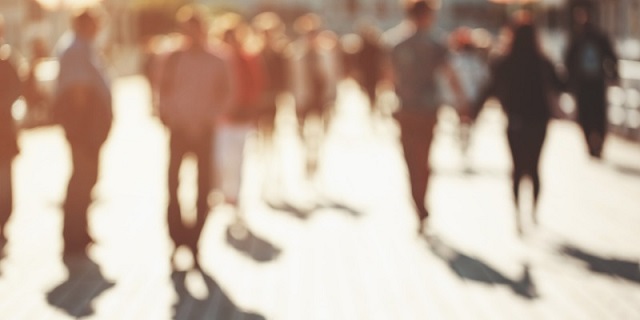
 Business1 day ago
Business1 day agoEstonia’s solution to Canada’s stagnating economic growth
-

 Alberta1 day ago
Alberta1 day ago‘Fireworks’ As Defence Opens Case In Coutts Two Trial
-
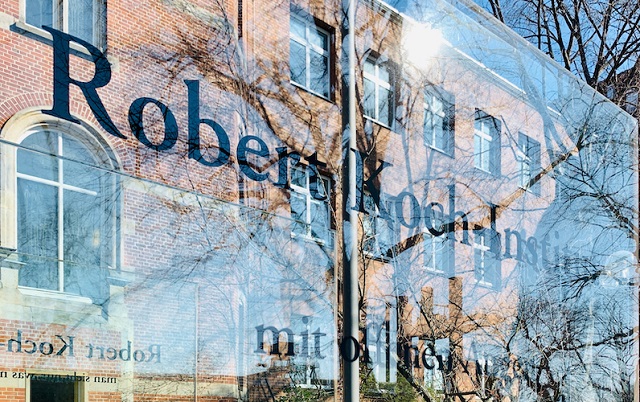
 COVID-191 day ago
COVID-191 day agoLeaked documents: German gov’t lied about shots preventing COVID, knew lockdowns did more harm than good
-

 Business1 day ago
Business1 day agoFederal government seems committed to killing investment in Canada
-
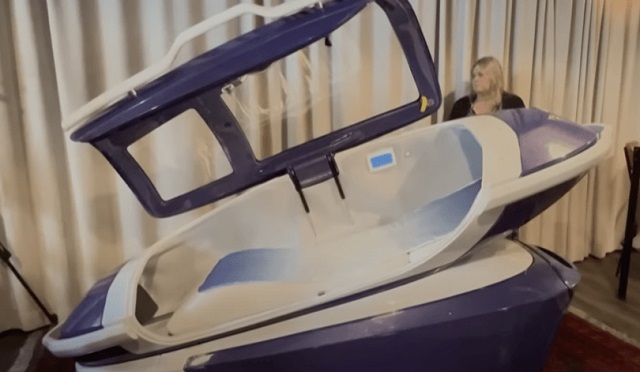
 International1 day ago
International1 day agoSwitzerland’s new portable suicide ‘pod’ set to claim its first life ‘soon’
-

 International20 hours ago
International20 hours agoHouse Passes Bipartisan Resolution Establishing Trump Assassination Attempt Task Force
-

 Bruce Dowbiggin12 hours ago
Bruce Dowbiggin12 hours agoGarbage In, Garbage Out: The Democrats 2024 Election Coup

